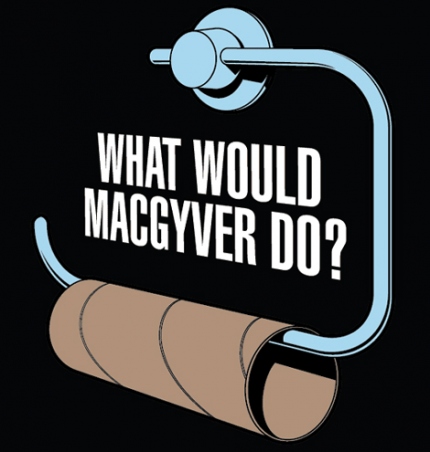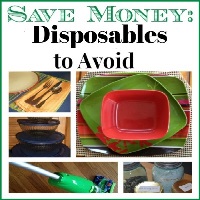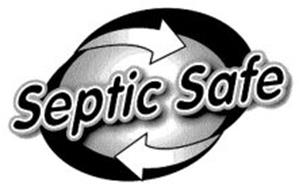Toilet Paper and Other Disposable Products Alternatives

|
It's a fact of nature that everyone needs to take a dump or two or more a day. Consider alternative sources and methods of cleaning up when the trusty Toilet Paper is not available.
Preparation in the Great Outdoors: Before, or when, the urge first hits is the time to decide what to use. It may take time to search, find and collect the wiping tools so start planning and collecting well before the need arises; before the urge becomes a raging alarm. Don't expect to just squat down and find the perfect wiping material within arms reach. It won't be there. |
Calculating annual toilet paper needs if intending to stockpile it:
For one week, put all the empty toilet paper rolls into a bag. When the week's up, tally the rolls you have in the bag; consider near-empty rolls still on the rack(s) in the bathroom(s). Multiply this number by 52 weeks.
Alternatives at Home or in the Great Outdoors:
Bidet: The hygienic substitute for toilet paper and reducing environmental waste by using less/no toilet paper. Americans use 57 sheets of TP on average every. single. day.
-
Benefits
How to use
Toilet Attachment
Portable/Travel Bidet
[Personal Bidet Video] [Backpacking Bidet Video]
Pre-moistened wipes
Compressed Coin-Size Towels
Sponge (wash and reuse)
Wash cloth (wash and reuse)
Cloth Rags from natual fibers (old clothes, towels, sheets, etc.) cut in squares with pinking shears to reduce fraying (wash and reuse)
Gauze (wash and reuse)
Sanitary Napkins - though they may be needed for what they were intended
Toilet paper tubes - unwrap and peel thin sheets from the cardboard tube - moisten with water to soften
Rope (large diameter) - frayed ends make it seem like a makeshift brush
Garden Plant Leaves (lettuce, etc.)
Wild Plant/Tree Leaves (non-poisionous and free of thorns/stickers)
Grass
Pine needles or cones
Moss (hanging from trees or on the ground)
Husks from corn or coconuts
Corn cobs (recently eaten preferred for comfort but dried ones will work too)
Banana peels
Smooth Sticks or Rocks
Water splashing or Snow "cleaning" with the LEFT hand
Butt scuffing/dragging on dewey tufts of grass
Bread - though you might not want to sacrifice food
Make 'normal' toilet paper from scratch
Your [left] hand - As long as no debris gets under your nails, hands are pretty easy to clean and disinfect.
Use your imagination and your brain to think of other safe alternatives
Disposal:
If the toilet is still functioning properly, used, thin paper products can still be flushed. But for those items that cannot be cleaned and reused and should not be flushed, burying in a deep dirt hole (NOT near a water source) or burning are good alternatives.
NOTE that in a water shortage situation, avoid using water to flush a toilet. Water in the tank is usually potable with little work.
Sanitation is Key:
Always clean hands with water and soap (when available), alcohol, or ashes (charcoal) from a campfire after the deed is done.
Toilet Alternatives:
- Build or Purchase
a Composting or Commercial Camping Toilet
-
More on Composting Toilets.
Review some state regulations here.
Go to BioLet.com to view one line of Compost Toilets.
- Another alternative is the Electric Incinerating Toilet. It is not considered the most power-saving option as, it's name implies, it requires electric power to burn human waste to ashes. It uses no water, requires no plumbing or drainage and it's easy to setup. Here's more information. Propane gas options (instead of electric) are available at insanely high prices.
- The standard toilet will flush without running water by adding water to the tank but, if water shortage is a concern, insert a trash bag liner in the toilet bowl.
- Use a 5-gallon Bucket with a hole cut in the lid (or other make-shift seat) with trash bag liner
- Dig a hole near a tree (for support)
For more ideas and details on this topic refer to these resources:
survivalsullivan.com
survivalblog.com
happypreppers.com
urbansurvivalsite.com
ultralightbackpackintips.blogspot.com
Save Money With Reusable Alternatives to Disposable Products:

|
To save money at the grocery store and reduce waste, consider reusable alternatives to many disposable products, such as paper towels, paper napkins, storage containers, and bags. With those items not on the grocery list, it makes more room in the grocery budget for actual food and other necessities. And it helps the environment.
Read: Disposable Products to Cross Off Your Grocery List |
Safe Products for Use in Septic & Sewage Systems:

|
Not all products (including chemicals) are safe to flush down a toilet connected to a Septic Tank or Sewage System. Here are some things to consider:
Septic-Safe Products Septic Systems - Best Toilet Paper to Use |
See Also:
No Plumbing? No Problem!
Personal Care Alternatives
Survival Medicine